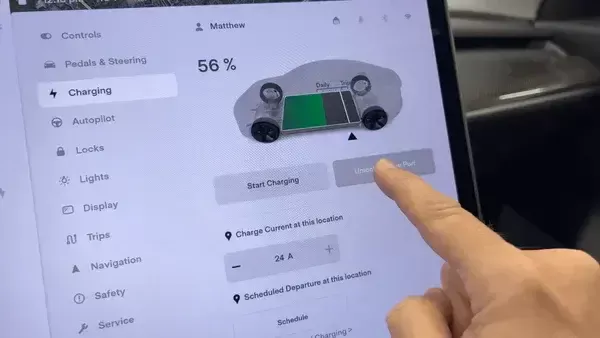Notifications

6 minutes, 45 seconds
-24 Views 0 Comments 0 Likes 0 Reviews

As a professional EV charger manufacturer in China, Topper Company provides dependable electric vehicle charging station equipment and comprehensive charging solutions.
As electric vehicles (EVs) become more mainstream, knowing how to charge them properly is key to maximizing their performance and extending battery life. One of the most crucial—and often overlooked—guidelines is the 80% charge limit. This isn’t just a manufacturer’s suggestion; it’s a vital practice for protecting your battery, ensuring safety, and optimizing your EV’s long-term efficiency.
In this article, we’ll explain why charging up to 80% matters, the types of chargers available, and how you can develop a smarter charging routine to keep your EV running smoothly for years.
Level 1 Charging: The Slow and Steady Home Option
Level 1 charging uses a standard 120-volt outlet, the same as most household sockets. It’s the easiest way to charge but also the slowest. For a fully depleted battery, reaching 80% can take 40–50 hours in a battery electric vehicle (BEV). Plug-in hybrids (PHEVs), with smaller batteries, take 5–6 hours.
Best for: Overnight charging or when your vehicle is parked for extended periods.
Level 2 Charging: The Everyday Fast Choice
Level 2 chargers operate at 240 volts in homes or 208 volts in commercial spaces, offering significantly faster charging speeds. Most EV owners install Level 2 chargers at home because they balance convenience with efficiency. BEVs typically reach 80% in 4–10 hours, while PHEVs charge in 1–2 hours. Level 2 chargers are also common in workplaces and public areas.
Best for: Daily home charging, work, and public use.
DC Fast Charging (DCFC): Quick Boosts on the Go
DC fast chargers are the fastest option, found mainly at highways and travel corridors for quick top-ups. They bypass the onboard charger to deliver direct current straight to the battery, bringing BEVs from zero to 80% in as little as 20 minutes to an hour. PHEVs generally don’t support DC fast charging.
Best for: Long trips or urgent charging needs.
Charging your EV to 100% may seem like a good idea to maximize range, but doing so regularly can harm your battery. Here’s why most manufacturers recommend keeping the charge at or below 80% for everyday use:
1. Protecting Battery Longevity
Lithium-ion batteries are sensitive to high charge levels. Charging to full capacity frequently stresses the battery chemistry, causing faster degradation, reduced driving range over time, and shorter battery life. Charging to 80% helps preserve the battery’s health, keeping your EV performing well for longer.
2. Managing Heat and Safety
Charging to high levels, especially fast charging, generates excess heat. Heat accelerates battery wear and can increase safety risks. Modern certified chargers include smart temperature controls that adjust charging speeds to protect battery health and prevent overheating.
3. Use Certified Chargers for Reliability
Always use certified chargers that meet safety standards like UKCA and CE. Trusted chargers provide steady current, prevent overcharging, and maintain safe voltage and temperature levels. Uncertified chargers may lack these protections, risking battery damage and vehicle safety.
4. Balance Speed with Battery Care
Fast charging is convenient but can push batteries beyond 80%, increasing heat and wear. Use fast charging sparingly, reserving it for when you really need it. For daily charging, Level 2 chargers and staying within the 80% limit are better for battery health.
For Daily Drivers:
Most daily commutes don’t require a full charge. Plug in overnight with a Level 2 charger and keep the battery topped up to 80%.
For Long-Distance Trips:
Charging beyond 80% is fine when preparing for long journeys or in areas with fewer chargers—but make it the exception, not the rule.
For Fleets and Commercial Use:
Smart charging systems can limit charge levels and schedule charging to optimize battery life and reduce energy costs.
Longer Battery Life: Protect your EV’s most valuable component.
Consistent Performance: Maintain range and efficiency over time.
Lower Maintenance: Reduce battery-related repairs and replacements.
Environmental Impact: Extend battery lifespan and reduce waste.
Many modern EVs feature built-in battery management systems that allow you to cap charging at 80%. Home chargers with app controls enable you to schedule charging during off-peak hours, monitor usage, and set charge limits—all helping you protect your battery and save money.
Charging your EV isn’t the same as filling up a gas tank. To get the most from your electric vehicle, it’s essential to charge smart. Following the 80% charge limit will extend your battery’s life, maintain optimal range, and improve safety. Combine this with high-quality chargers and intelligent charging habits, and you’ll enjoy many years of efficient, worry-free driving.Know more about Google SEO Directory
China EV Chargers EV Charger Manufacturer EV Charging Solutions

